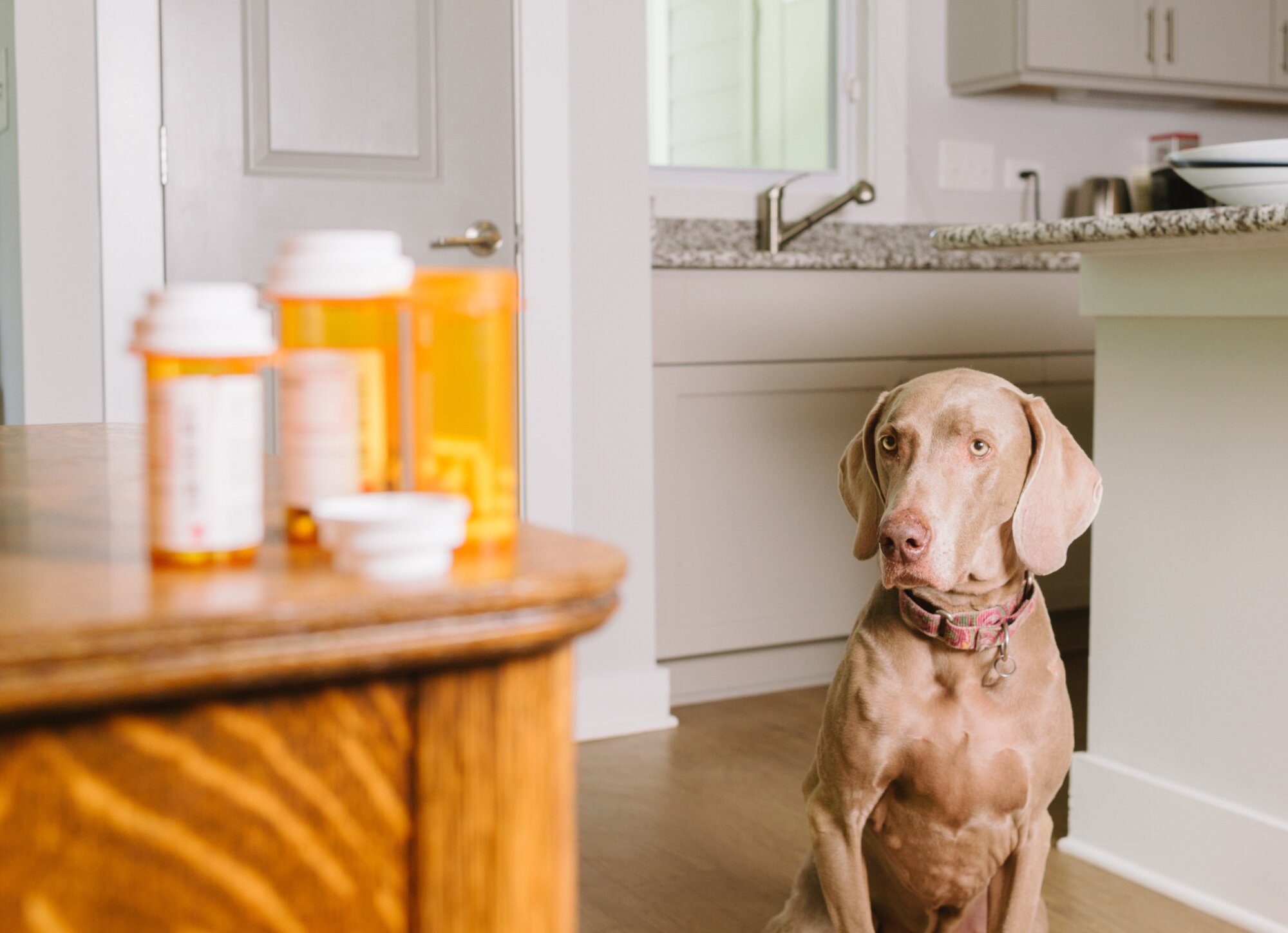Dogs are smart animals, and some tend to be picky about their food, treats, and treatments — especially when they are sick. No pet parent wants to have to give their dog medicine, but accidents and illnesses happen.
You may need to give your dog pills to keep them healthy or treat an illness at some point in their lifetime. It's important to know how to get a dog to take a pill safely to keep them healthy.
In this article, we'll cover:
- Why you might need to give your dog a pill
- What to consider when giving your dog a pill
- 8 ways to get your dog to take a pill
Why you might need to give your dog a pill

There are many reasons why pills and medication improve your dog's health. Here are a few reasons why your best friend may need to take pills to stay healthy.
Allergies
Environmental allergies and sensitivities to certain foods may lead your veterinarian to recommend allergy medications in pill form. Allergies can also be treated with injections, supplements, and topical treatments.
Anxiety
If your dog freaks out as soon as you step out the front door, they may suffer from anxiety. Conditions like separation anxiety and situational anxiety are often treated with prescription medications to calm them down like:
- Trazodone
- Diazepam
- Alprazolam (Xanax®)
Pain medication
Whether from an injury, aging, or joint pain, pain meds in pill form are a common treatment for dogs of all ages. Common medications for pain relief include:
- Galliprant
- Meloxicam
- Carprofen
What to consider when giving your dog a pill
Before giving them a pill, there are a few things pet parents should consider. Keep these things in mind to make treatment time easier.
Read the feeding instructions.

On your pet's pill bottle, there should be instructions for the medication. For example, some pills and liquid medications should not be given to your dog when they have an empty stomach.
Ask your veterinarian about the medication.

Before you leave the veterinary clinic, ask your vet if there are any specific rules for giving your pup their medication. Certain medications cannot be mixed with food or broken up.
Recognize if your dog is picky.

A dog's sense of smell is much better than a human's. If you have a picky dog, they may taste or smell their medication when you hide it in a treat or food.
8 ways to get your dog to take a pill
To avoid an accidental bite or stress out your pup, here are 8 tips to give your furry friend pills safely.
1. Ask a friend or family member for help.
Holding on to your dog while trying to give them medication can be tricky. Ask a trusted friend or family member to hold your dog, so you can focus on giving them their medication.
2. Consider calming products.
Consider a calming spray or diffuser to mellow your dog out before treatment time. Calming treats may also help keep your dog calm.
3. Get pill pockets.
Pill pockets are big enough to hide one pill and may make taking pills easier for your dog. Pill pockets are like plain treats with a small compartment for a pill inside.
Pet parents can use trick training to distract their furry friend from treatment time. Tell them to do a trick, and let your dog perform it as usual.
After each trick, give your dog a plain pill pocket without pills hidden in them. Repeat this 2-3 times in rapid succession.
Then, give your dog a pill pocket with the medication inside. Most dogs will not notice the medication hidden in the pill pocket.
4. Try hiding pills in treats or peanut butter.
Pills wrapped in a special treat like crunchy peanut butter or plain yogurt can serve as a medicated treat for your pup. The strong smell and taste from your dog's favorite treat should mask the medicine.
5. Break up your dog's medication.
Try breaking up the pill and adding it to dry or canned dog food. Let your dog eat their meal as normal and watch to make sure your dog eats all of the medication.
6. Give your dog the pill by hand.
If hiding a pill in their food or pill pockets doesn't work, you may need to give your dog their medicine by hand.
HERE'S A QUICK GUIDE TO GIVE A DOG A PILL BY HAND.
Tell your dog to "sit" on a non-slip surface.
Have your dog sit in a normal position on a non-slip, flat surface. While giving your dog their pill, you'll want to be sure they are as steady as possible.
Grease the pill.
Cover the pill in a small amount of your dog's food or peanut butter. Or, wrap it in dog treats to make the pill easier to swallow.
Hold your dog gently.
Wrap your non-dominant hand around the top of your dog's muzzle. Gently hold your dog's upper jaw with your thumb on one side and your fingers on the other.
Open your dog's mouth.
Gently apply pressure to drop their lower jaw. To do this, lightly tilt your dog's head toward the ceiling and put light pressure on their canine teeth.
Place the pill on the back of their tongue.
Hold the pill with your dominant hand using your index finger and thumb. Place the pill on the back third of their tongue, past the hump. Then take your fingers out of your dog's mouth.
Wait for them to swallow.
Rubbing your dog's throat in a downward motion may encourage them to swallow. Once your dog has swallowed their pill, they may lick their nose and lips.
Reward them with treats and praise.
When they swallow, give them treats and lots of pets to make your dog feel good. After giving them their medication a few times, they may associate taking their meds with a positive experience.
7. Use a pill gun.
Pill guns can be helpful if your dog needs to take one pill or multiple pills at a time. If your dog is picky — and other methods have not worked — you may need to place the pill far enough back on your dog's tongue for them to swallow.
Instead of exposing your hands and fingers to accidental bites, pill guns place the pill at the back of your dog's mouth for you. That way, the pill can slide right down your dog's throat when they swallow.
8. Ask your vet about alternative medications.
If giving your dog pills is too tricky, talk to your vet at your dog check-up about a new form for your dog's drugs. For example, you may want to try a liquid form of your dog's medicine.
Topical medications may be a better option for your dog. Wags Advance® for Dogs is a topical flea and tick solution that protects dogs from fleas, ticks, and chewing lice.
Topical medications can be messy, and they are most effective when they are applied correctly. So, knowing how to apply flea treatment the right way is important.
Learning how to give dogs pills can be difficult and it requires practice. But, doing it the right way will keep both you and your dog safe throughout the process.


